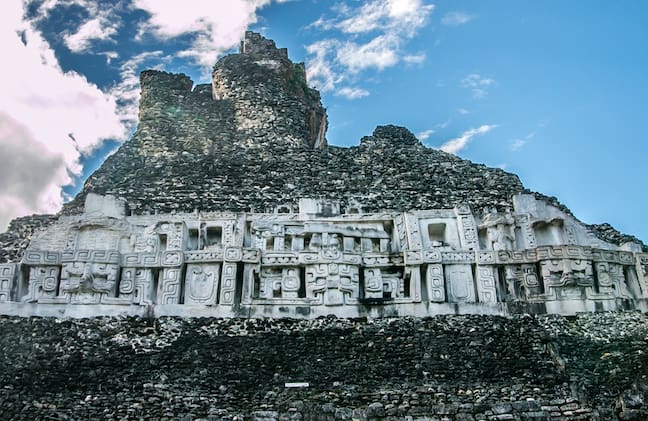XUNATUNICH MAYAN TEMPLE
Xunantunich derives from the Yucatec Maya language and means “Stone Woman.” Local legend holds that around the end of the 1800s, a gentleman from San Jose Succotz, Belize went hunting near the site. Crossing the base of the Castillo, he was struck by the appearance of a beautiful statuesque Maya maiden dressed in traditional “huipil” and “pik” and dazzling in the rays of the rising sun. The woman stood motionless by the mouth of a cave that extended beneath the giant structure.



Stricken by her appearance, the man threw his gun aside and ran downhill to the village. After recounting his tale, several villagers led by their native priest returned to the site. Arriving at the giant mound, they found the mouth of the tunnel, but the stone maiden had disappeared. After that, locals claim that the woman has appeared to several others, but none have been able to follow her into the cavern.


Xunantunich was first explored in the 1800s by Dr. Thomas Gann, a British medical officer. The first recorded photograph of the site was taken in 1904 and displayed in the Peabody Museum of Archaeology in Cambridge, Massachusetts, for many years. After this, activities at the site were abandoned until 1924, with the return of Gann. Records show that in his second visit, he unearthed many Maya treasures, the history of which have been lost and the whereabouts unknown. It is believed and quite possible that many museums and private collectors of Maya Artifacts display these items without any idea of their origin.









